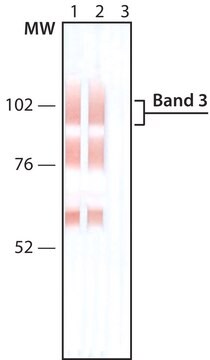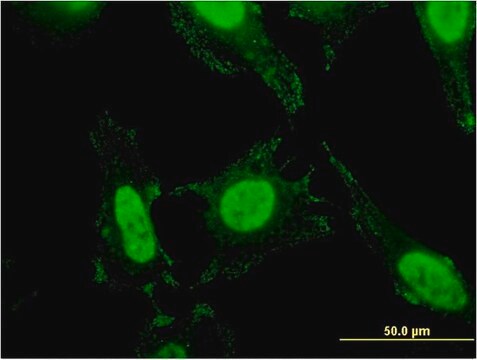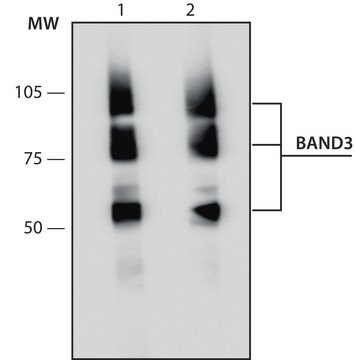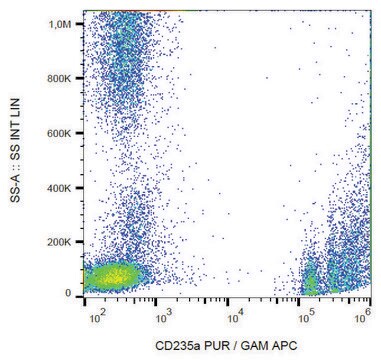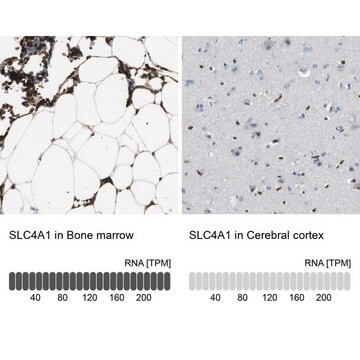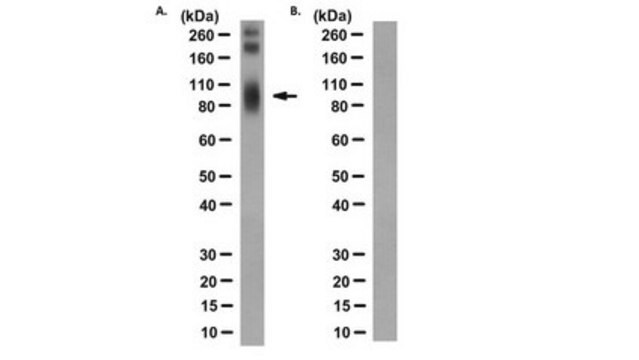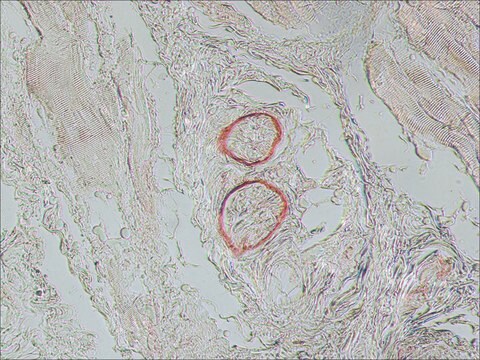G7900
Monoclonal Anti-Glycophorin A (α) antibody produced in mouse
ascites fluid, clone E4
About This Item
Productos recomendados
origen biológico
mouse
conjugado
unconjugated
forma del anticuerpo
ascites fluid
tipo de anticuerpo
primary antibodies
clon
E4, monoclonal
contiene
15 mM sodium azide
reactividad de especies
human
técnicas
agglutination assay: 1:800 using human erythrocytes
flow cytometry: suitable using bone marrow nucleated cells
indirect immunofluorescence: suitable using bone marrow nucleated cells
western blot: suitable using extracts of human red blood cell ghosts
isotipo
IgM
Nº de acceso UniProt
Condiciones de envío
dry ice
temp. de almacenamiento
−20°C
modificación del objetivo postraduccional
unmodified
Información sobre el gen
human ... GYPA(2993)
Especificidad
Inmunógeno
Aplicación
- agglutination assay at a working dilution of 1:800 using human erythrocytes
- flow cytometry using bone marrow nucleated cells
- indirect immunofluorescence using bone marrow nucleated cells
- western blot using extracts of human red blood cell ghosts
Acciones bioquímicas o fisiológicas
Cláusula de descargo de responsabilidad
¿No encuentra el producto adecuado?
Pruebe nuestro Herramienta de selección de productos.
Elija entre una de las versiones más recientes:
¿Ya tiene este producto?
Encuentre la documentación para los productos que ha comprado recientemente en la Biblioteca de documentos.
Nuestro equipo de científicos tiene experiencia en todas las áreas de investigación: Ciencias de la vida, Ciencia de los materiales, Síntesis química, Cromatografía, Analítica y muchas otras.
Póngase en contacto con el Servicio técnico